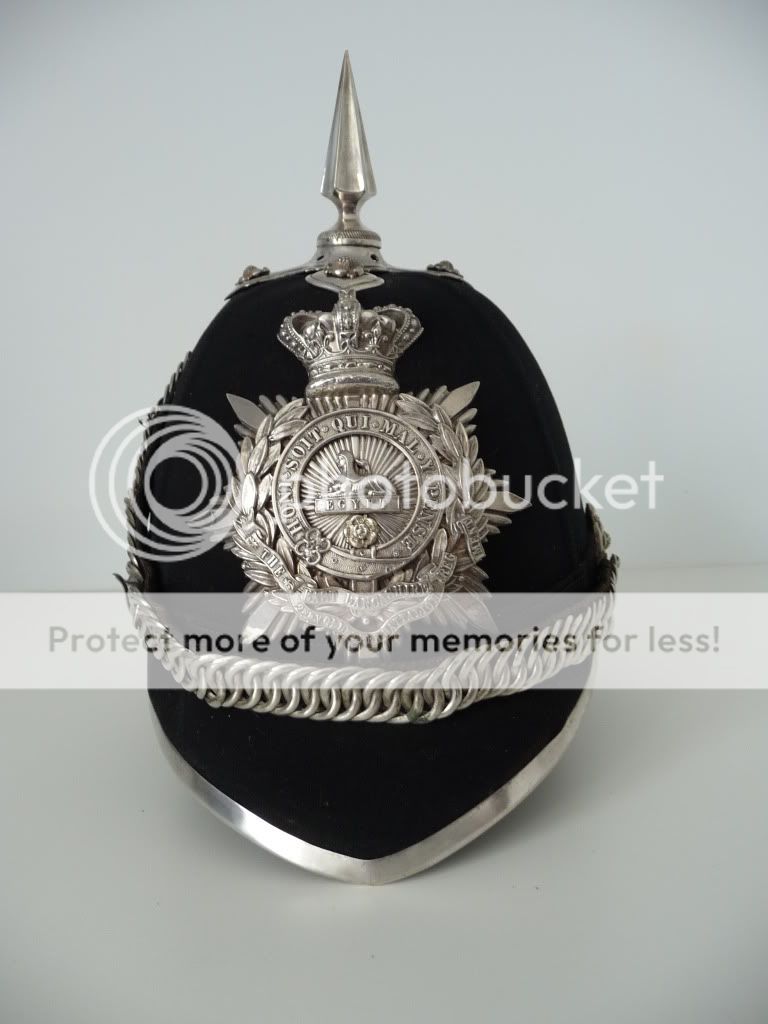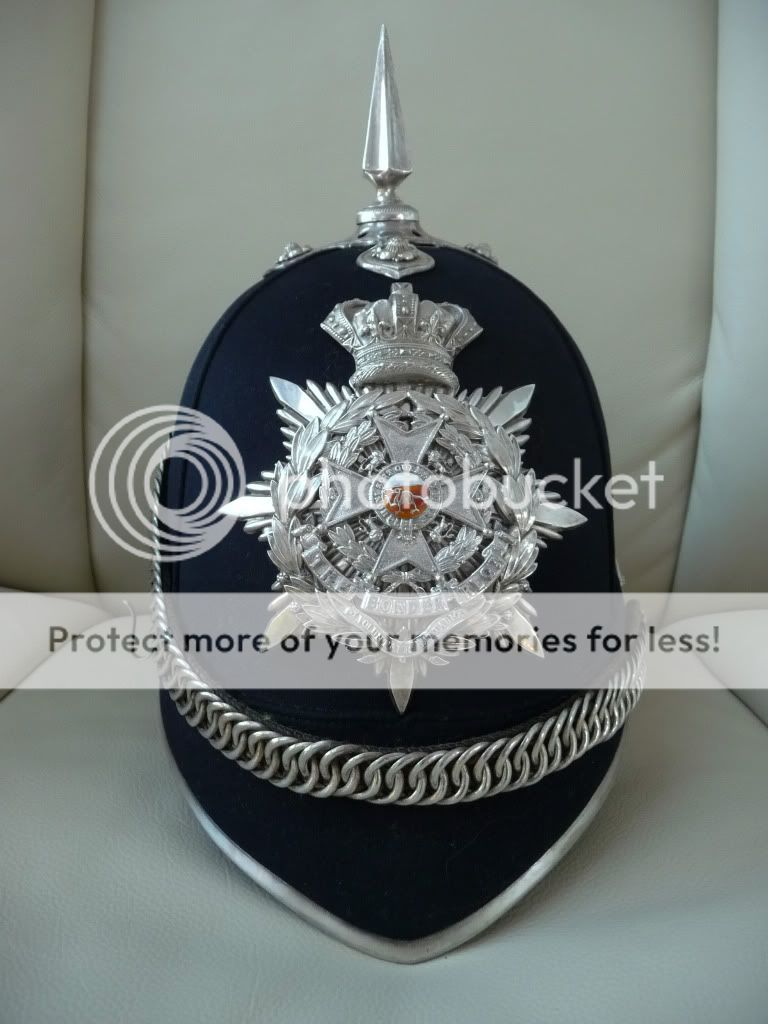chinstrap
Active member
I posted my British helmets here some time ago, but they disappeared in the hacking melt-down. I know from those posts that there are some blue cloth/home service helmet fans out there, so here are a couple of new ones.
2nd Volunteer Battalion, East Lancashire Regiment QVC. I would welcome any information on the plate. It differs from the 'standard' 2nd VB plate , which simply has the sphinx on the tablet, bearing the word 'Egypt' set on a dark background, whereas this has the red rose of Lancashire under the tablet, as on the later cap badge, and the device is set against a rayed background.

My most recent acquisition- Officer's Blue cloth QVC to Border Regiment 1st Volunteer Battalion. It's in immaculate condition. One oddity , however, is that division between the red and white enamel should be horizontal, whereas it clearly rises from left to right as you look at it. I thought this meant the enamel centre had been inserted out of true, but the dragon's position in relation to the lettering on the motto looks to be correct.

Patrick
2nd Volunteer Battalion, East Lancashire Regiment QVC. I would welcome any information on the plate. It differs from the 'standard' 2nd VB plate , which simply has the sphinx on the tablet, bearing the word 'Egypt' set on a dark background, whereas this has the red rose of Lancashire under the tablet, as on the later cap badge, and the device is set against a rayed background.

My most recent acquisition- Officer's Blue cloth QVC to Border Regiment 1st Volunteer Battalion. It's in immaculate condition. One oddity , however, is that division between the red and white enamel should be horizontal, whereas it clearly rises from left to right as you look at it. I thought this meant the enamel centre had been inserted out of true, but the dragon's position in relation to the lettering on the motto looks to be correct.

Patrick
